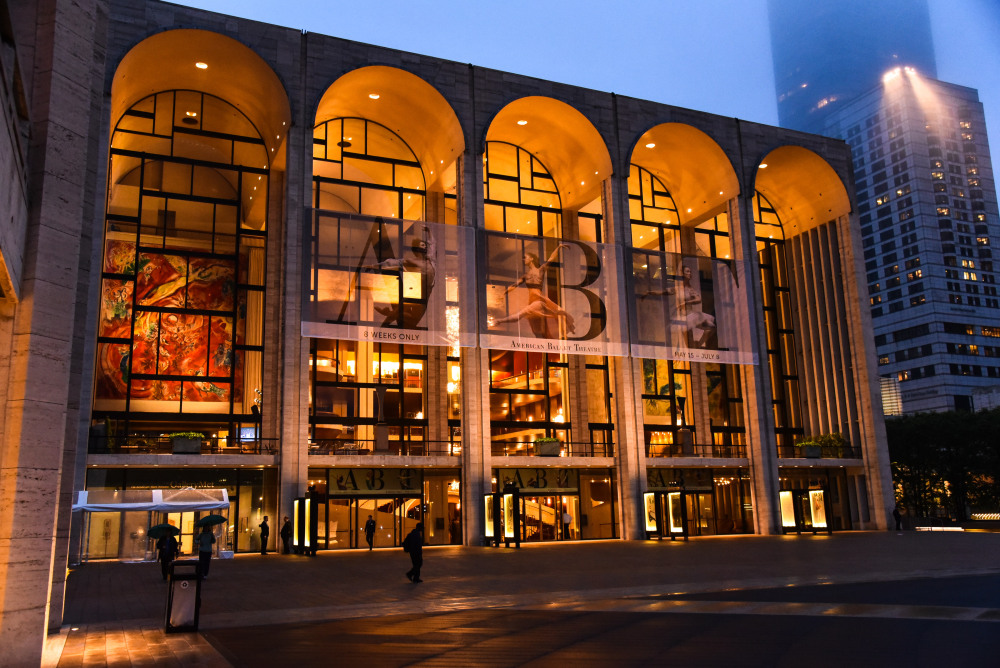The American Ballet Theater (ABT) is a classical ballet company based in New York. It has an annual eight week season at the Metropolitan Opera (Lincoln Center) in the spring and a shorter season at the David H. Koch Theater in the fall; the company tours around the world the rest of the year. ABT was founded in 1939 by Lucia Chase and Richard Pleasant and is recognized as one of the world’s leading classical ballet companies. ABT is the parent company of the Jacqueline Kennedy Onassis School of American Ballet and was recognized as the National Ballet of America Company in 2006 by the United States Congress.

History
In 1939, Lucia Chase (1897–1986), a rich widow who practiced classical dance with M. Mordkin, together with entrepreneur Richard Pleasant (1906–1961) and artist Oliver Smith (1918–1994) created the ballet troupe, which was first named “Ballet Theatre”, and in 1956 -“American Ballet Theatre”. The first performance of the troupe took place in January 1940. In the early years, traditional ballets were performed, such as Silpids by Fokin, as well as productions that used modern and ethnic dance. To enrich the repertoire, Chase attracted various choreographers, including Fokin and Balanchine. The repertoire also included Rodeo ballets Agnes de Mille and Billy Guy by Eugene Loring.
It is impossible to imagine an American Ballet Theatre without the dramatic ballets of English choreographer Anthony Tudor. Tudor began his choreographer career in the Balle Rambert English troupe in London, but when Ashton politely rejected the invitation of the American theater in 1939, Tudor, who was chosen, came to the US with dancer Hugh Lang (1911-1988). Enriching the language of ballet performance through the use of household gestures, Tudor sought emphasized drama from the dancers. The movements were born as if by the body itself; the flared passion suddenly extinguished when the body, resisting the surging destructive emotions, stopped in stillness. Tudor became famous for his performances on social and psychological themes. Tudor was not only a prolific choreographer but an artist who had a huge impact on several generations of spectators, dancers and choreographers. After his death in 1987, the Tudor Trust was founded to oversee the productions of Tudor ballets around the world.

In 1944, Robbins staged a one-act ballet with the music of L. Bernstein “Fancy free” about the love adventures of three sailors who came ashore in New York. In 1967, Eliot Feld (b. 1942) set the ballet “Forerunner” to the music of Prokofiev’s Fifth Piano Concerto. In the 1960s and 1970s, the troupe also performed the ballets of Glen Tetley (b. 1926), Kenneth Macmillan (1929–1992) and Birgit Culberg (b. 1908). In 1976, Tayla Tarp (b. 1942), who worked in the modern dance style, staged for the dancer Mikhail Baryshnikov (b. 1948) who emigrated from the Soviet Union.
Baryshnikov was the artistic director of the American Ballet Theatre troupe in 1980–1989. He did not consider it necessary to invite foreign celebrities, preferring to nominate artists who worked in the troupe. He also invited choreographers working in the modern dance style to stage new works. The most successful work of 1988 was the one of Mark Morris (b. 1955) – “Drink to Me Mely With Thine Eyes” to the music of V.Tomson’s piano pieces, somewhat reminiscent of Jerome Robbins ’ballet to piano music – “Dances at a Party and the Goldberg Variations”, it was performed by a whole ensemble of dancers. Baryshnikov invited Macmillan (as an artistic adviser) and staged his multi-act ballet Romeo and Juliet. After Baryshnikov retired in 1989, the troupe was led by Jane Hermann (b. 1937) for a short time, and in 1992, the former American Ballet Dancer, Kevin Mackenzie (b. 1954), took over the management.
Dancers
Ballet troupe composed of such famous American dancers as N. Kay, A. Alonso, K. Conrad, M. Tolchif, N. Golner, L. Danielyan, R. E. Kesun, R. Hightower, J. Robbin, J. Crisa, U. Dollar, H. Lang, was regularly replenished with foreign artists. There are also representatives of the Soviet and Russian schools: I. Baronov, A. Markova, A. Eglevsky, A. Dolin, and dancers from France: N. Philippard, C. Marchand, J. Babel. A particularly significant contribution to the formation and development of American ballet was made by such legendary representatives of Russia national ballet scene as Rudolf Nuriev, Vladimir Malakhov, Andris Liepa. Today the leading dancers (Principal dancer) of the American Ballet Theater are performed by the soloists of the Mikhailovsky Theater, Natalya Osipova and Ivan Vasilyev, and the world-famous St. Petersburg-Mariinsky Prima – Diana Vishneva.

Repertoire
The repertoire of the troupe included the greatest ballets of the XIX century (“Swan Lake”, “Giselle”, “Sleeping Beauty”, “The Nutcracker”, “Sylphide”, “Coppelia”, “Vain Precaution”, “Raymond”), the best works of the beginning of the XX century (“Chopeniana”, “Appolon” and “Jardin aux Lilas and Rodeo”) and the famous modern productions (“Airs”, “Duets”, “Push Comes to Shove”). In the process of working on this extraordinary repertoire, ABT collaborated with the greatest geniuses of the twentieth-century choreography, including George Balanchine, Anthony Tudor, Jerome Robbins, Twyla Tharp, Agnes de Mil.

Over 70 years of its history, the AVT troupe visited a total of 132 cities and 42 countries of the world. The American Ballet Theater also became the first American dance company invited to perform in the Soviet Union (1960 and 1966). Today, the ABT troupe is recognized as one of the greatest classical troupes that define American style on the world stage.